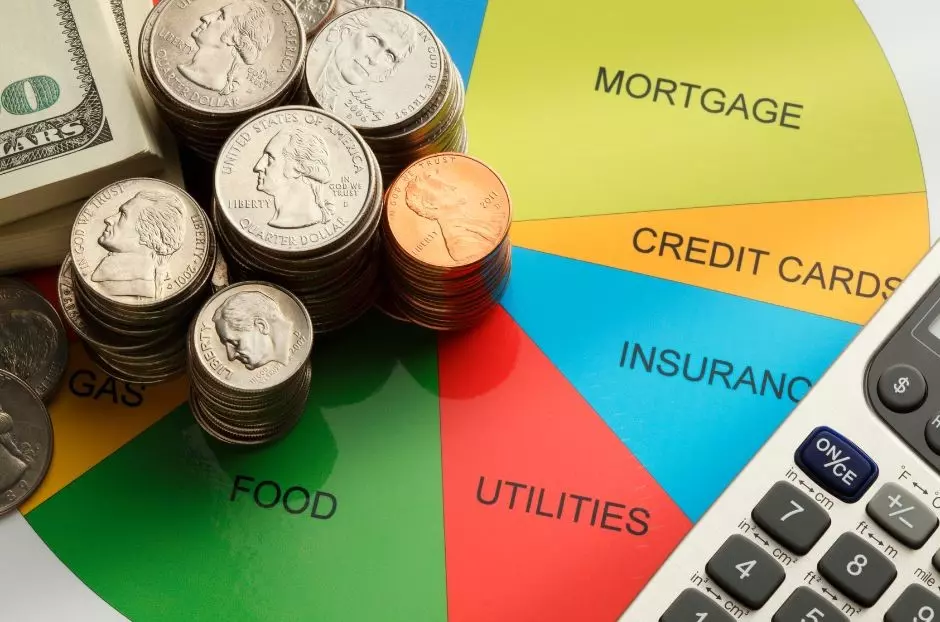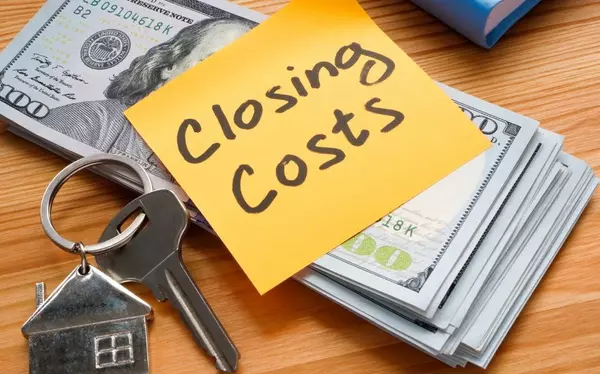How to Accurately Budget for Your First Home Purchase

How to Accurately Budget for Your First Home Purchase
Although it's a great milestone to purchase your first house, cautious financial planning is also necessary. Budgeting accurately is crucial to ensure you don’t stretch your finances too thin and can comfortably manage your new expenses. An accurate budget helps you understand how much home you can afford and prepares you for the full scope of costs involved, from the down payment to ongoing maintenance.
One of the biggest challenges first-time homebuyers face is accounting for all potential expenses. Many buyers focus solely on the down payment, but it's essential to consider additional costs such as property taxes, homeowners insurance, and maintenance. Additionally, unexpected repairs can strain your budget if you haven’t set aside an emergency fund.
The benefits of creating a detailed budget are significant. It provides clarity on what you can afford, helps avoid financial strain, and ensures you're prepared for both expected and unforeseen expenses. By thoroughly assessing your financial situation and using budgeting tools, you’ll be in a stronger position to make informed decisions and enjoy the process of homeownership without unnecessary stress.
Key Takeaways
- Thorough Financial Assessment: Begin by understanding your financial situation. Assess your monthly income and track all expenses to create a solid foundation for your home-buying budget. Calculate your debt-to-income (DTI) ratio to determine your financial health and ensure you qualify for favorable mortgage terms.
- Realistic Budget Calculation: Set a realistic home price range by considering factors such as location, size, and amenities. Use online calculators to estimate how much home you can afford. Account for down payment requirements, which typically range from 3% to 20% of the purchase price, and develop a savings strategy to meet this goal.
- Include All Costs: Factor in additional costs beyond the purchase price. This includes mortgage costs (fixed-rate vs. adjustable-rate), property taxes, homeowners insurance, maintenance, and closing costs. Establish an emergency fund for unexpected repairs and ensure you’re prepared for these ongoing expenses.
- Leverage Tools and Resources: Use budgeting apps like Mint and YNAB to track your finances and set savings goals. Mortgage calculators help estimate monthly payments and compare loan options. Consulting financial advisors and real estate agents can provide valuable guidance and support.
- Stay Disciplined and Adjust: Create a detailed savings plan and automate contributions to stay on track. Avoid common budgeting mistakes by being realistic about your income and expenses, and adjust your budget for future financial changes. Regularly review and update your budget to ensure it aligns with your home-buying goals.
Understanding Your Financial Situation
Before diving into homeownership, it's essential to get a clear picture of your financial situation. Start by assessing your monthly income from all sources, including salaries, bonuses, and any side income. This will give you a solid foundation for understanding your financial capacity.
Next, track and categorize your current expenses. Document every expense, from rent and utilities to groceries and entertainment. Categorizing these expenses helps identify areas where you can cut back, potentially increasing your budget for a home.
An important metric to consider is your debt-to-income (DTI) ratio. This ratio calculates the portion of your income that is used to settle debt. Divide the total amount of debt payments you make each month by your gross monthly income, then multiply the result by 100. For example, if you pay $1,000 in monthly debts and your gross income is $4,000, your DTI ratio is 25%.
Maintaining a healthy DTI ratio is crucial, as lenders typically prefer a ratio below 36%. A lower DTI indicates you’re less risky to lenders, which can lead to better mortgage terms. By understanding and managing your financial situation effectively, you’ll be better prepared for a successful home purchase.
Calculating Your Home Budget
Setting a realistic price range for your new home involves considering several factors that influence home prices. Location, size, and amenities are key elements. Homes in desirable neighborhoods or with more features typically cost more. To find a price range that suits your budget, use online calculators that estimate how much you can afford based on your income, debts, and other financial factors. These tools help you gauge an affordable home price and align it with your budget.
Estimating down payment requirements is another critical step. While down payments traditionally range from 3% to 20% of the home’s purchase price, the exact amount you need depends on the type of mortgage and lender requirements. A higher down payment can reduce your monthly mortgage payments and potentially eliminate private mortgage insurance (PMI).
To save for your down payment, set a clear savings goal and develop a strategy. Consider automating transfers to a savings account dedicated to your home fund. Additionally, review and adjust your monthly budget to allocate more towards savings. By planning ahead and using available tools, you can ensure you’re financially prepared for your home purchase.
Factoring in Additional Costs
When budgeting for your first home, it’s essential to account for more than just the purchase price. Mortgage costs, for instance, vary based on the type of loan you choose. Fixed-rate mortgages offer stable monthly payments, while adjustable-rate mortgages may start with lower rates but can fluctuate over time, affecting your monthly payments as interest rates change. It's critical to comprehend how these rates affect your spending plan.
Property taxes and homeowners insurance are ongoing expenses that also need to be factored into your budget. Property tax rates vary by location, so research local rates to estimate this cost accurately. Homeowners insurance is essential for protecting your property and is typically based on the home's value and location.
Maintenance and repair costs should not be overlooked. Routine upkeep and unexpected repairs can add up, so it's wise to set aside funds specifically for these expenses. Establishing an emergency fund dedicated to home repairs can provide financial relief when unforeseen issues arise.
Lastly, closing costs, including appraisal fees and title insurance, are a one-time expense at the purchase of your home. These costs can range from 2% to 5% of the home’s price. Estimating and preparing for these costs will help you avoid surprises and ensure a smoother home-buying
Tools and Resources for Budgeting
When planning for your first home purchase, leveraging the right tools and resources can make budgeting more manageable. Budgeting apps and software like Mint and YNAB (You Need A Budget) are excellent for tracking your finances. These tools allow you to categorize expenses, set savings goals, and monitor your spending in real time. Look for features that offer integration with your bank accounts, customizable budgeting categories, and visual spending reports to help you stay on track.
Mortgage calculators are another invaluable resource. These calculators help estimate your monthly mortgage payments based on factors such as loan amount, interest rate, and term length. Using these tools allows you to experiment with different scenarios and find a payment plan that fits your budget. Comparing multiple mortgage options is crucial, as it can help you find the most favorable terms and rates.
Seeking professional advice is also important. Consulting a financial advisor or mortgage broker can provide personalized insights into your financial situation and home-buying options. Additionally, real estate agents can offer valuable advice on budgeting for a home purchase and may assist in finding properties that align with your financial plan. Using these resources ensures a well-informed and strategic approach to your home-buying journey.
Tips for Staying on Track
Staying on track with your home-buying budget requires a solid plan and mindful financial habits. Creating a savings plan is essential for accumulating the down payment and other home-buying expenses. Start by setting a clear savings goal and breaking it down into manageable monthly contributions. Automate transfers to a dedicated savings account to ensure consistent progress. Consider cutting non-essential expenses or increasing your income through side jobs or freelance work to accelerate your savings.
Avoiding common budgeting mistakes is equally important. Financial hardship can result from either overestimating your income or underestimating your expenses. Be realistic about your income and carefully track all expenditures, including occasional costs like car maintenance or annual subscriptions. Additionally, anticipate future financial changes, such as potential job shifts or family growth, which could impact your budget. Adjust your plan to accommodate these changes to prevent financial surprises.
Regularly reviewing and adjusting your budget helps ensure that it remains aligned with your goals and circumstances. By staying disciplined with your savings plan and avoiding these pitfalls, you’ll be better prepared to handle the financial demands of purchasing a home and enjoy the process with greater confidence.
Conclusion
Accurately budgeting for your first home purchase is a crucial step towards a successful home-buying experience. Start by thoroughly understanding your financial situation, including assessing your income and expenses and calculating your debt-to-income ratio. This foundational step helps establish a realistic budget for your new home.
When calculating your home budget, consider factors like location, home size, and amenities, and use online calculators to estimate what you can afford. Don’t forget to account for additional costs such as mortgage payments, property taxes, insurance, maintenance, and closing costs. Factoring these expenses ensures you’re fully prepared for the financial commitment of homeownership.
To make the process go more quickly, make use of budgeting tools and resources. Apps like Mint and YNAB can help you track your finances, while mortgage calculators allow you to explore various loan options. Consulting with financial advisors and real estate professionals can provide valuable insights and guidance.
Starting your budgeting process early and employing these tools will set you up for success. By taking these steps, you’ll have a clearer picture of what you can afford and be better equipped to handle the financial responsibilities of buying your first home.
Categories
Recent Posts










